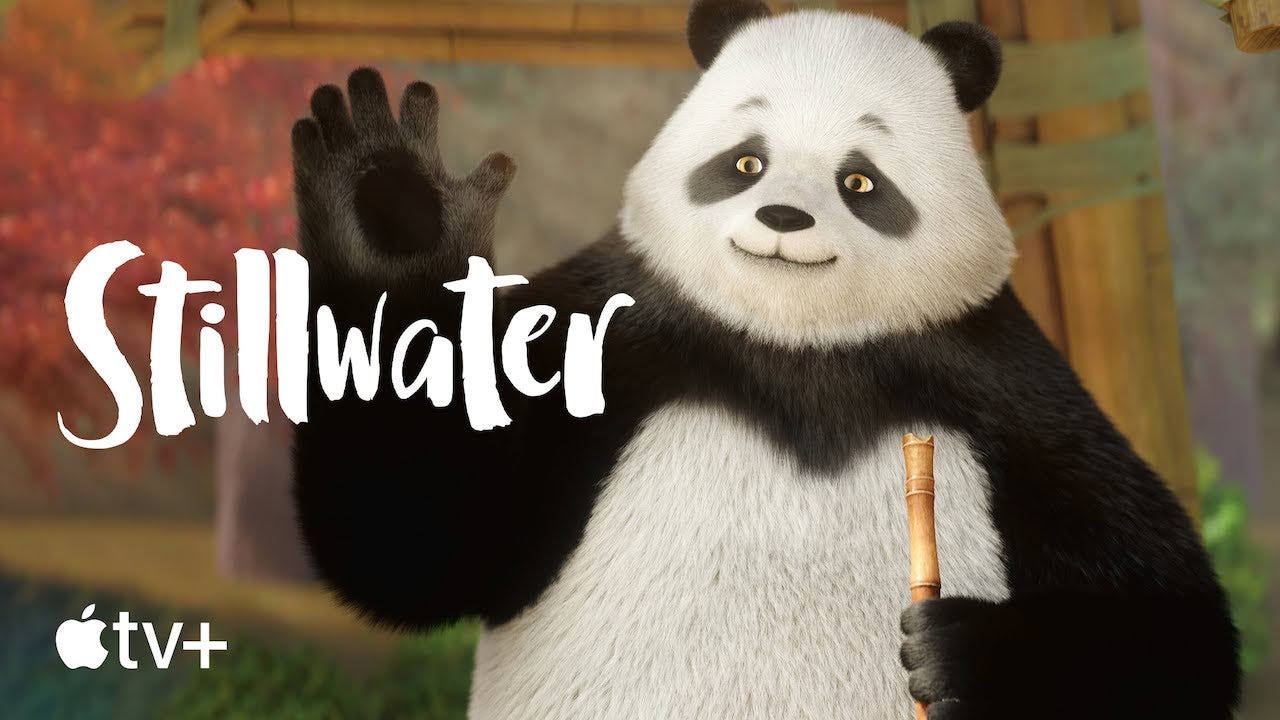Maybe your child should watch Stillwater
A wise panda cultivating mindfulness in children
Apple TV+'s ‘Stillwater’ seems like a simple children's show. For context, it’s about a wise, old panda named Stillwater. He lives next door to three siblings. They’re all fairly young and there are no parents for whatever reason.
That aside, the context is that he offers pearls of wisdom to the three siblings at different times. It’s colourful and relaxing, and the show has a very slow pace. Beneath its adorable exterior, cute illustrations and light-heartedness, there is a program with the potential to foster good mental health in young viewers.
Wait, are you really telling me to get my kids to watch TV?
I mean, they are probably going to anyway. A few weeks ago, I told you video games have the potential to be therapeutic—don’t be too surprised! Here is my reasoning though:
Mindfulness but fun: Stillwater's gentle guidance encourages the children to slow down, observe the world, appreciate the little things, and change their perspective when they are focused on the wrong things. This focus on mindfulness is a valuable tool for young people. It can help them a framework by which to manage their stress, the slow pace of the show and its gentle lessons can help them regulate emotions and appreciate the beauty that can be found in everyday moments. Episodes often centre around everyday situations—a rainy day, a fight with a sibling—all things your child can likely relate to. Through Stillwater's calm presence, young people can learn to find peace and focus even amidst challenges.
Social and emotional learning: ‘Stillwater’ tackles a variety of social and emotional issues that young people can encounter—these include anxiety about an impending presentation at school, to jealousy between siblings. By observing how the characters navigate these situations with Stillwater's gentle guidance, young people can gain valuable social and emotional learning skills. They can find healthy ways to express emotions, techniques to manage conflict, and the importance of empathy and understanding—all by observing them on screen.
Building strong relationships: The show emphasises how developing positive relationships can build emotional resilience. The bond between the siblings and Stillwater showcases the importance of having a supportive and caring adult figure in a child's life. This can inspire children to build strong, healthy connections with family members, friends, and mentors.
The power of imagination: ‘Stillwater’ encourages a love of learning and exploration through the imaginative stories that the wise old panda tells on screen. The siblings go off embarking on mini-adventures, turning everyday activities into opportunities for discovery. This playful approach to learning can spark a young person’s creativity and help them develop a lifelong love of exploring the world around them.
Okay, you have convinced me—how do I make it work?
If you are looking to maximise the impact this show could have on your child, or thinking about your role in this, here are some ideas I have:
Watch it together: Not only is this a way for you and your child to connect, you can also discuss the themes and characters with after each episode. This can help them absorb the lessons—you might even learn something! Children can always teach grown-ups lessons.
Practice mindfulness: You can engage in short mindfulness exercises together, inspired by the show's techniques. Try YouTube for further ideas if you want to go even further.
Open communication: Use this opportunity and encourage your child to share their own emotions and experiences, relating them to the situations in the show.
Be more Stillwater: He might be a big old panda, but he is actually an excellent model for a ‘good enough’ parent. No parent is perfect. Stillwater himself makes mistakes, misses things and misses opportunities for connection. That being said, he is always emotionally available to the siblings, and he is always able to listen to them actively, hear them, and relate to them in their way.
Can you help me?
Absolutely! I am experienced in teaching and practising mindfulness to children and young people, and can take a flexible approach to making mindfulness work across diverse age ranges. I can also coach you as a parent, care-giver, or professional, in how you can understand and internalise mindfulness yourself—and model it for the children in your care.
Please get in touch:
Final thoughts
‘Stillwater’, used correctly, can be much more than a charming show about a clever panda. If used correctly, it can be a powerful tool for nurturing your child’s mental well-being. By incorporating the show's themes into your parenting approach, you can help your child cultivate mindfulness, navigate emotions, and build strong social skills—and even find a little peace of mental well-being yourself—all with the help of a wise, old panda friend.
Did you like this post? Think you have a friend who might want to read it?
Make sure you don’t miss any of my other posts:




